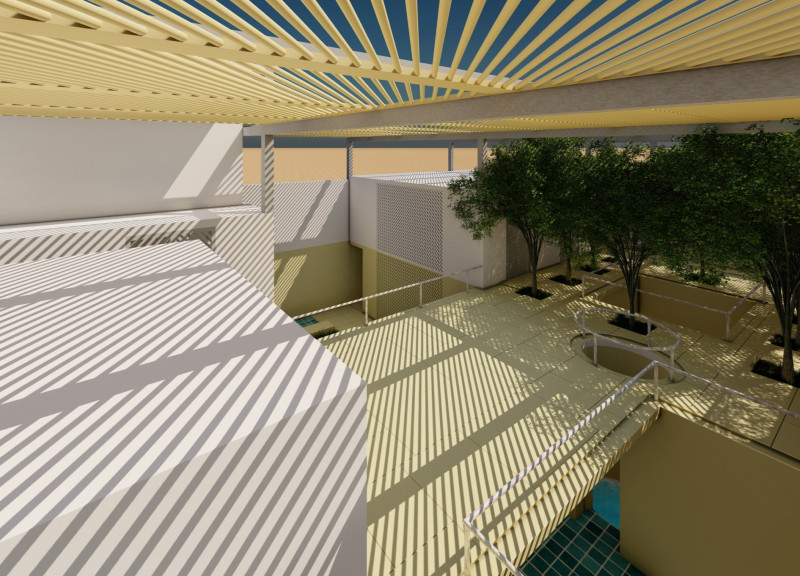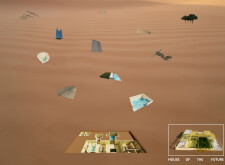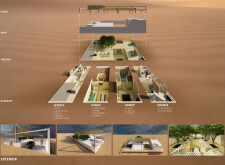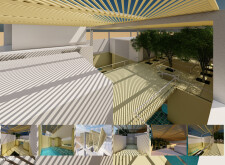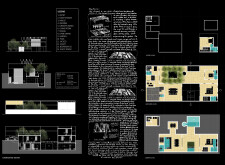5 key facts about this project
### Overview
"House of the Future" is situated in an arid landscape, designed to respond effectively to the environmental conditions characteristic of desert regions. The project integrates functionality and sustainability, addressing the essential needs of modern living while fostering a relationship between the built environment and the natural surroundings. The design aims to create distinct spatial experiences that enrich daily life.
### Spatial Organization and Functionality
The layout is organized into four quadrants, each designated for specific functions: the **Service Quadrant** includes practical spaces such as the entry and parking, prioritizing privacy for service access; the **Public Quadrant** accommodates communal areas like the living room and open dining space, designed to encourage social interaction; the **Family Quadrant** offers recreation and leisure with amenities such as a pool and jacuzzi; and the **Private Quadrant** provides rooms for rest and solitude.
Central to this organization is the courtyard, which not only facilitates natural ventilation and daylight but also enhances the spatial flow between different sections of the house. This arrangement reflects contemporary residential needs while promoting community engagement.
### Material Selection and Sustainability
The design employs a diverse array of materials chosen for their functional benefits and aesthetic qualities. **Concrete** is utilized throughout the structure for its durability and thermal efficiency, essential in managing the extreme temperatures of the desert ecosystem. **Extensive glazing** through windows and sliding doors invites ample natural light and fosters connections to the exterior environment. **Wood elements** offer shading from the sun while adding warmth, and **natural stone** connects the interiors to the landscape, enhancing the overall coherence of the design. **Metal components** contribute to structural integrity and decorative elements, providing a modern aesthetic.
Sustainability is a key focus, with features such as solar panels and integrated water management systems evidencing a commitment to environmentally responsible practices. This design approach not only maximizes resale value but also adapts to the specific challenges posed by the desert, ensuring long-term viability and reduced environmental impact.


